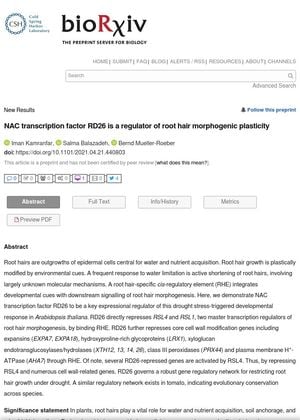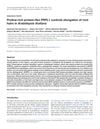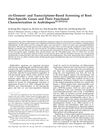NAC Transcription Factor RD26 Is a Regulator of Root Hair Morphogenic Plasticity
April 2021
in “
bioRxiv (Cold Spring Harbor Laboratory)
”

TLDR RD26 controls root hair growth during drought by repressing key genes, helping plants save energy.
The study demonstrates that the NAC transcription factor RD26 is a key regulator of root hair growth in response to drought stress in Arabidopsis thaliana, a model plant. RD26 directly represses RSL4 and RSL1, two master transcription regulators of root hair morphogenesis, and also represses core cell wall modification genes. This repression restricts root hair growth under drought conditions, serving as an adaptive strategy to conserve cellular energy. The study also found that a similar regulatory network exists in tomato plants, suggesting an evolutionary conservation of this mechanism across species.

